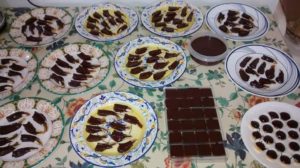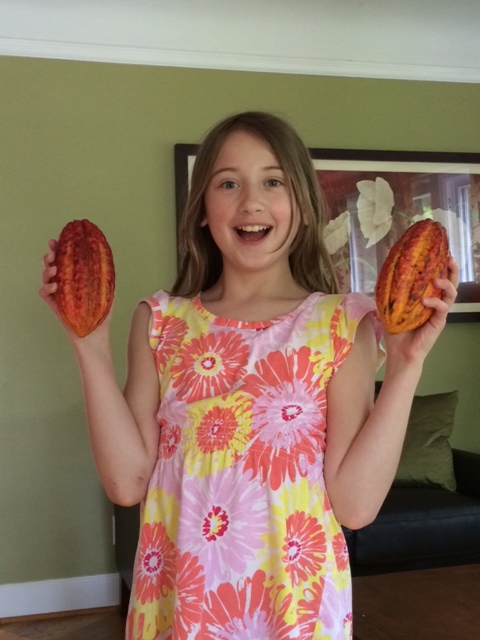So, you just got your fresh cacao fruits and want to make chocolate, what now?
A simple chocolate can be made at home using common and inexpensive tools and materials. Chocolate has been made from cacao seeds on a small scale since around 1900 BC, by the ancient Olmecs, Aztecs and Mayans in what is now southern Mexico and Central America.
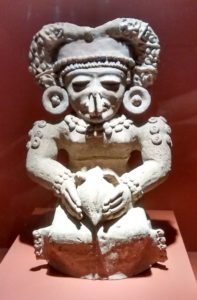
The original form that chocolate was consumed was as a hot drink, mixing the roasted and ground cacao seeds with vanilla, chili and other spices. Solid chocolate was developed much later, in the 1800s, after cacao was introduced into Europe. The basic steps in making chocolate are fermentation of the fresh seeds, sun drying of the fermented seeds, roasting, dehulling and winnowing, and grinding.
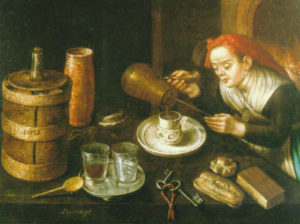
Fermentation
The fresh seeds with the adhering pulp are extracted from the recently harvested fruits and placed into a pile or container, where naturally occurring yeasts and bacteria use the sugars in the pulp, producing heat, alcohol and finally acetic acid.
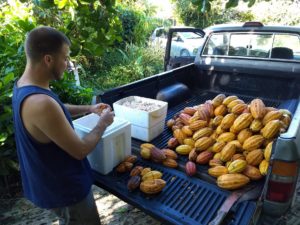
This process kills the seed embryo and causes chemical changes in the seed which contribute to the development of chocolate flavor. On a home scale, the seeds can be fermented in a small Styrofoam cooler.
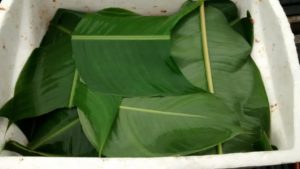
A small amount of seeds may not produce sufficient heat, and the cooler may be placed inside a closed vehicle in the sun to help the fermentation process.
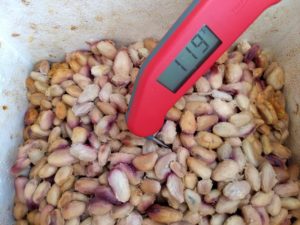
White seeded Criollo are completely fermented in 2-3 days, while purple seeded Trinitario and Forastero types take approximately 7-8 days to ferment completely. Properly fermented seeds turn from white or purple to a uniform brown color, and are now referred to as “beans”.
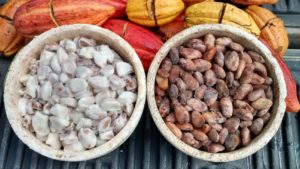
Sun drying
The fermented beans may be dried either washed or unwashed, but beans with the residue of fermented pulp washed off will dry faster. The beans can be dried in the sun, on a hard surface such as a concrete patio, on a screen under cover or inside a hot car, or in an oven on low heat. The beans are fully dry when they are brittle and snap open easily. At this stage the beans can be shelled and eaten as raw nibs.
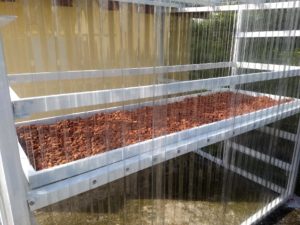
Roasting
The heat of roasting changes and develops the chocolate flavor, and helps to facilitate the separation of the seed hull from the roasted bean. The beans are roasted at 350-400F for 15-30 minutes, and can be roasted lighter or darker to taste. They can be roasted in an open cast iron pan, stirring continually, or in an oven. When properly roasted, the beans turn dark brown, some may pop slightly, and have a chocolatey brownie-like (but not burnt) smell.
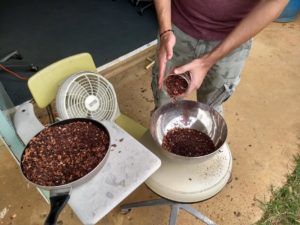
Dehulling and winnowing
The roasted bean and seed coat are very brittle and break apart easily. Dehulling is the process of breaking the bean and seed coat into pieces and then separating the two. The beans can be broken into nibs with a wooden mortar and pestle, or by gently crushing them with a rolling pin or heavy wine bottle. They can be first placed inside a large ziplock bag to keep the pieces from flying around the kitchen. Once all the beans are broken, the hulls can be separated from the nibs by winnowing in the wind or in front of a fan. A hair dryer can also be used to blow the lighter hulls out of a wide bowl, while leaving behind the heavier nibs.
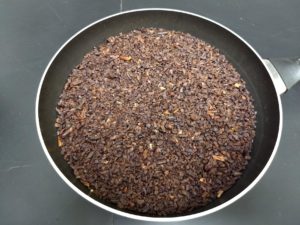
Grinding
The cleaned nibs can be eaten alone or used in baking, but to make either a chocolate drink or solid chocolate, they need to be ground as finely as possible. Traditionally, cacao beans were ground on a heated stone metate, and this is still one way to make chocolate at home. Other methods include grinding the nibs in a heated stone mortar or in a Corona grain mill. Heating the nibs and the grinding equipment melts the cocoa butter and helps to liquefy the ground nibs. Probably the best way to grind the nibs is with a Champion Juicer. Ground nibs of 100% cacao is called “cacao liquor”, although it doesn’t have any alcohol. Homemade chocolate will always have a somewhat gritty texture, as it is practically impossible to reduce the particles to a size less than 14 microns, as do the commercial stone melangers, but the resulting chocolate is still delicious.
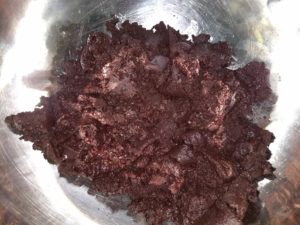
When grinding, other ingredients can be added, including 20-30% sugar (or more, to taste), vanilla beans, cinnamon, nutmeg or other spices, dried hot peppers, dried milk, or dried fruits. Pure ground nibs make a dark bitter chocolate with a 100% cacao content, and adding other ingredients will decrease the final cacao percentage. A good dark chocolate can have 50% or 80% (or more) cacao content, while cheap milk chocolate can have as little as 15% cacao (the rest is fillers).
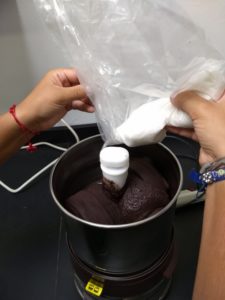
The finished semi liquid chocolate can made molded into balls, sticks, bars or other shapes, and will solidify as it cools… enjoy!!!
